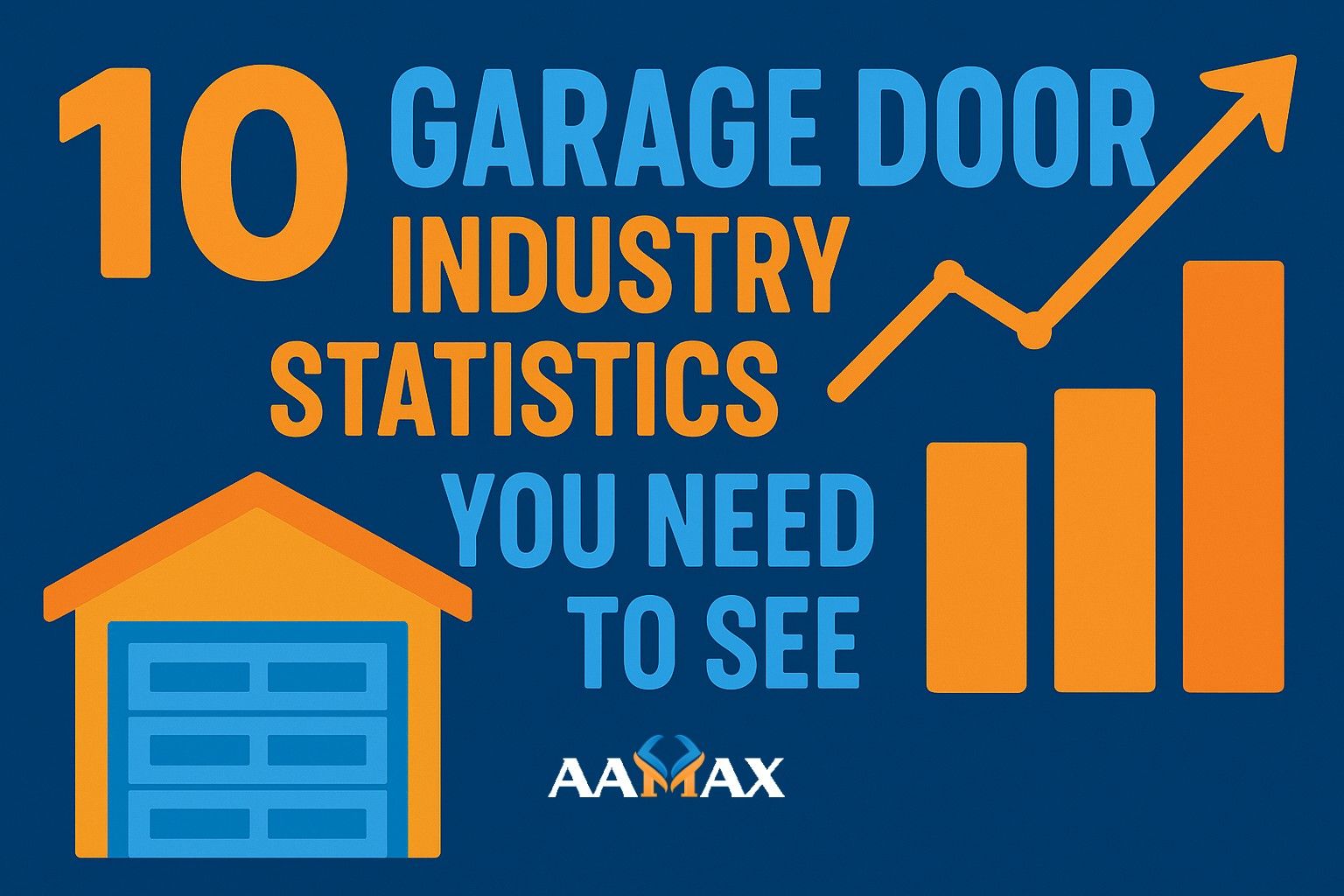
10 Garage Door Industry Statistics You Need to See
The garage door industry has evolved far beyond its humble beginnings as a purely functional home feature. Today, garage doors play a major role in home security, energy efficiency, aesthetics, and property value. With advancements in digital marketing, smart systems, and design trends, the garage door market continues to grow and adapt to modern consumer demands.
If you are a garage door business owner, contractor, or simply a homeowner curious about the industry, understanding the statistics behind this market can help you make better decisions. This article explores 10 key garage door industry statistics that highlight market growth, consumer behavior, technology adoption, and revenue opportunities.
Hire AAMAX For Website Development and Digital Marketing Services
Why Garage Door Industry Statistics Matter
Before diving into the numbers, let’s briefly touch on why these statistics are important:
- Market Insights: They help businesses understand demand and consumer preferences.
- Growth Opportunities: They reveal emerging trends such as smart garage doors.
- Competitive Advantage: Businesses can adapt strategies to align with industry changes.
- Consumer Awareness: Homeowners gain insights into how garage doors impact value and energy efficiency.
With that foundation in mind, let’s explore the top statistics shaping the garage door industry.
1. The Global Garage Door Market Is Worth Over $20 Billion
The garage door industry has grown into a massive global market. Recent reports estimate the global garage door market is valued at over $20 billion and continues to expand annually.
This growth is fueled by rising homeownership rates, increased focus on home security, and demand for modern, visually appealing garage door designs.
2. North America Leads the Market
When it comes to market share, North America dominates the garage door industry. The U.S. alone accounts for a significant percentage of global revenue due to its high number of single-family homes with attached garages.
Additionally, American homeowners prioritize home improvements that boost curb appeal, making garage doors a natural investment.
3. The Average Garage Door Replacement Costs Between $1,200–$4,000
Cost is a major factor for homeowners, and statistics show that replacing a garage door typically costs between $1,200 and $4,000 depending on the size, material, and technology features.
This range makes garage door replacement a mid-tier investment compared to other home renovation projects, offering a relatively high ROI.
4. Garage Door Replacement Offers Up to 102% ROI
According to the Cost vs. Value Report, garage door replacement consistently ranks as one of the highest-return home improvement projects. In fact, homeowners can expect up to 102% ROI when upgrading to a new garage door.
This makes garage doors not just a functional investment, but also a profitable one when it comes to resale value.
5. Over 70% of Homeowners Use the Garage Door as the Main Entry
Surprisingly, most homeowners don’t primarily use their front door. Research shows that over 70% of homeowners use their garage door as the main entry point to their home.
This reliance emphasizes the importance of garage door durability, safety, and smooth operation. It also explains why homeowners are increasingly investing in automated and smart systems.
6. The Smart Garage Door Market Is Booming
The integration of smart technology has transformed the industry. The smart garage door opener market is expected to grow at a double-digit CAGR (compound annual growth rate) over the next several years.
Smart garage doors offer homeowners remote access, smartphone control, and security alerts—features that are particularly appealing in today’s connected households.
7. Steel Is the Most Popular Garage Door Material
When it comes to material preference, steel leads the garage door market, followed by wood, aluminum, and fiberglass. Steel is favored for its:
- Durability
- Affordability
- Low maintenance needs
- Variety of design options
Homeowners love that steel doors provide both strength and customization, balancing function and aesthetics.
8. Energy Efficiency Is a Driving Factor
More than ever, homeowners are concerned about energy efficiency. Insulated garage doors are increasingly popular because they help regulate indoor temperatures and reduce energy bills.
Statistics show that insulated doors can improve thermal efficiency by up to 20%, making them a major selling point for eco-conscious consumers.
9. The Garage Door Repair and Maintenance Market Is Growing
The industry doesn’t just thrive on new installations—repairs and maintenance are a huge part of the business. With most garage doors used multiple times daily, wear and tear is inevitable.
The repair and service segment is expected to see steady growth, driven by increased reliance on garage doors as the main entry point for homes.
10. Commercial Garage Doors Are in High Demand
While residential demand is strong, the commercial garage door sector is also booming. Warehouses, distribution centers, and retail spaces are investing in high-performance doors for:
- Security
- Efficiency
- Accessibility
With e-commerce driving warehouse growth, this trend shows no signs of slowing down.
Key Takeaways from These Garage Door Industry Statistics
These 10 garage door industry statistics highlight a sector that is not only growing but also evolving rapidly with technology and consumer demand. The main takeaways include:
- The market is valued at over $20 billion and continues to grow.
- Homeowners prioritize garage doors for security, efficiency, and aesthetics.
- Smart and energy-efficient doors are shaping the future of the industry.
- Garage door replacement delivers exceptional ROI, making it a top remodeling choice.
- Both residential and commercial demand are strong and rising.
How Businesses Can Leverage These Insights
For garage door businesses, contractors, and marketers, these statistics present several opportunities:
- Offer Smart Solutions: Capitalize on the growing demand for smart garage doors.
- Promote Energy Efficiency: Highlight the benefits of insulated doors.
- Focus on ROI Messaging: Show homeowners how new doors increase property value.
- Expand into Commercial Services: Serve warehouses and retail businesses.
- Provide Reliable Maintenance Plans: Build long-term customer relationships through repair and upkeep services.
Conclusion
The garage door industry is more dynamic than many realize. With a market size exceeding $20 billion, strong consumer demand, and technological innovations, it’s an industry full of opportunities.
For businesses, staying ahead means understanding these trends and adapting offerings to meet customer needs. For homeowners, it means recognizing that garage doors are not just functional, but also a powerful contributor to security, energy savings, and property value.
If you’re looking to grow your garage door business or want expert help building a professional online presence, consider partnering with AAMAX. AAMAX is a full-service digital marketing company offering web development, digital marketing, and SEO services to help businesses in the garage door industry capture more leads and revenue.







